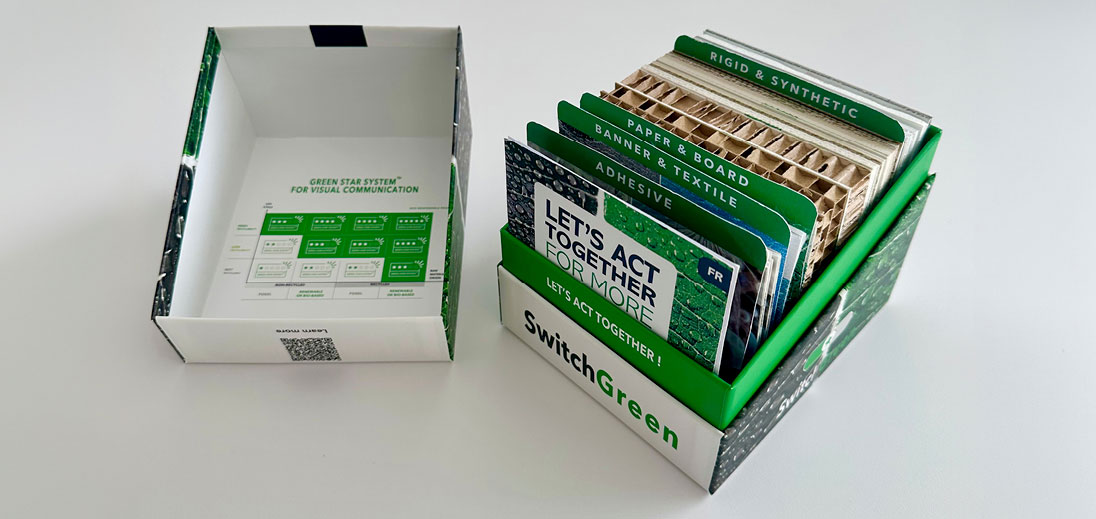How do consumer choices redefine supply chain practices?
When it comes to choosing a product, what matters most is price, quality, and… sustainability. This last one is now a critical criterion in consumers’ purchasing decisions. It reflects a growing awareness of the environmental and social impact among customers. This trend underscores the urgency for businesses to adopt eco-friendly practices and materials within their supply chains.
When it comes to choosing a product, what matters most is price, quality, and… sustainability. This last one is now a critical criterion in consumers’ purchasing decisions. It reflects a growing awareness of the environmental and social impact among customers. This trend underscores the urgency for businesses to adopt eco-friendly practices and materials within their supply chains.
Supply chain sustainability: a crucial role in the purchasing decision
Sustainability is not just a buzzword; it has become vital for any business with a long-term vision. Indeed, beyond environmental benefits, sustainable practices answer the growing requirements of the different stakeholders around companies. Customers, employees, investors, and governments expect businesses to demonstrate responsibility and sustainability along the supply chain.
Companies have to coordinate sourcing, production, inventory management, and transportation for maximal efficiency and customer satisfaction. While traditional supply chain management is about increasing speed and reducing costs, sustainable supply chain management also includes environmental and societal concerns.
And it is critical when we know the supply chain represents 90% of most consumer goods companies’ environmental impact, according to McKinsey & Company.
According to a study by Sensormatic Solutions, sustainable brands that promote their efforts have a competitive advantage since 80% of Americans consider sustainability when making purchases. And 70% of consumers say they would change their shopping habits towards brands with more sustainable practices.
Here are some examples of these concerns:
- Lowering energy usage,
- Minimising transportation,
- Cutting unnecessary waste,
- Reducing water consumption,
- Adopting a circular economy approach,
- Prioritising safe and fair labour practices.
Sustainability supply practices have become imperative for companies wanting to meet their stakeholders’ expectations. In the long run, it benefits society, the environment, and the company's profitability.
Do you want to upgrade to more sustainable Visual Communication? Discover the SwitchGreen Box, an easy way to switch to more eco-responsible alternatives for your communication projects. Let’s focus on it in the next part.
Discover The SwitchGreen Box by Antalis
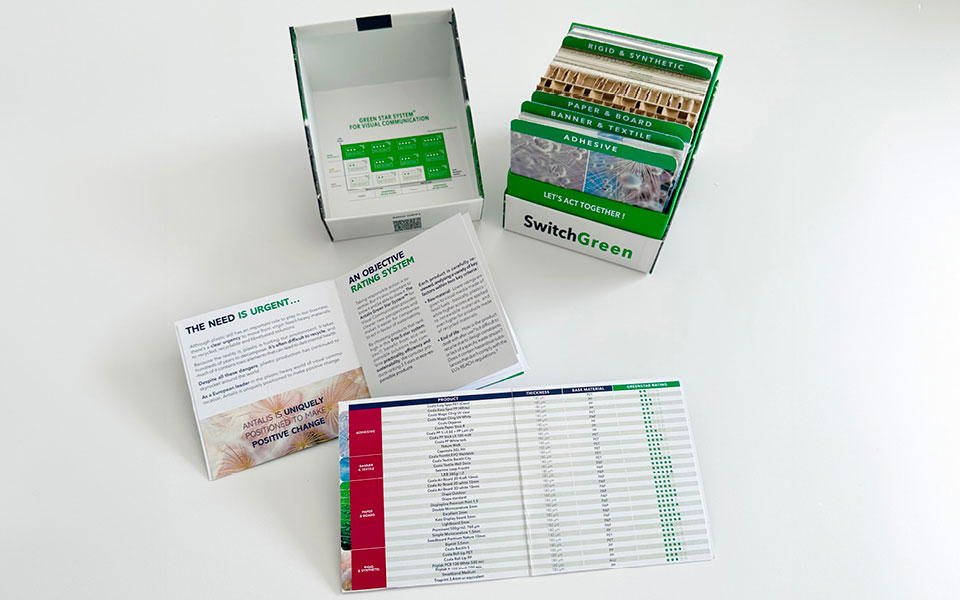
The SwitchGreen Box is your ultimate asset to find alternative materials to conventional communication and display products like PVC and other plastics. We've selected the best alternatives for your key applications and divided them into 4 categories: panels, tarpaulins and textiles, adhesives, and rigid synthetics.Inside the box, you'll find 40 printed samples of alternative materials. You can touch and feel each of them to get a precise idea of it.
On each page, you can have a look at their characteristics, our Green Star System™ ranking, and a range chart. The box also includes the key technical specifications of each product, including product certifications and printing compatibility.
With the SwitchGreen Box, we aim to give you a clear overview of today’s alternatives. Test the rendering on our products and show them to your customers to help them make the transition.
40 concrete alternative solutions for you communication products
Samples in the SwitchGreen Box are classified in 3 categories of communication products: retail signage and displays, self-adhesive applications, and large-format banners.
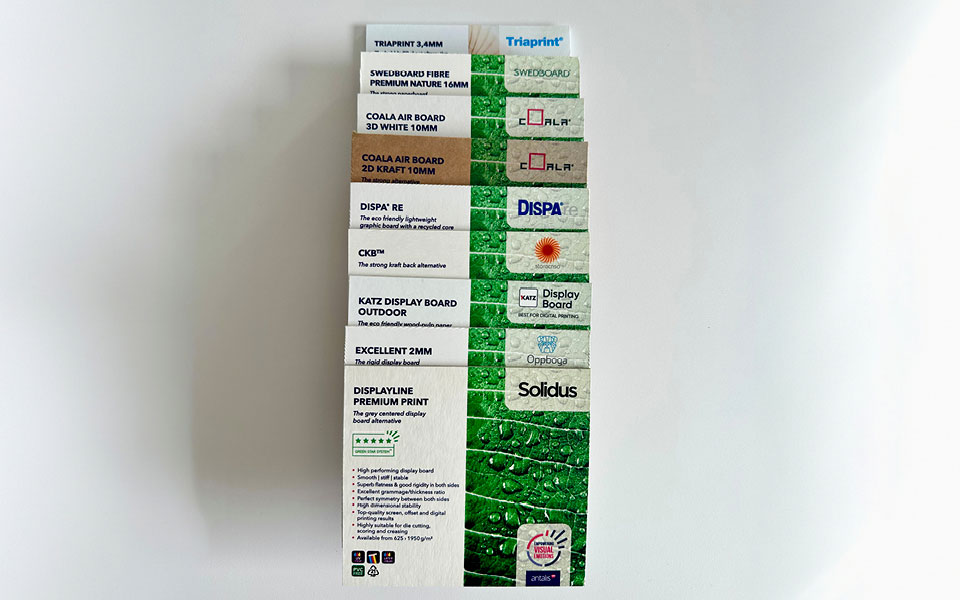
Retail signage and displays
PVC foam used to be one of the most popular products for indoor displays and signage. The good news: many alternatives exist, and they are more durable than cardboard. Discover a wide range of billboards and honeycomb panels for your displays.
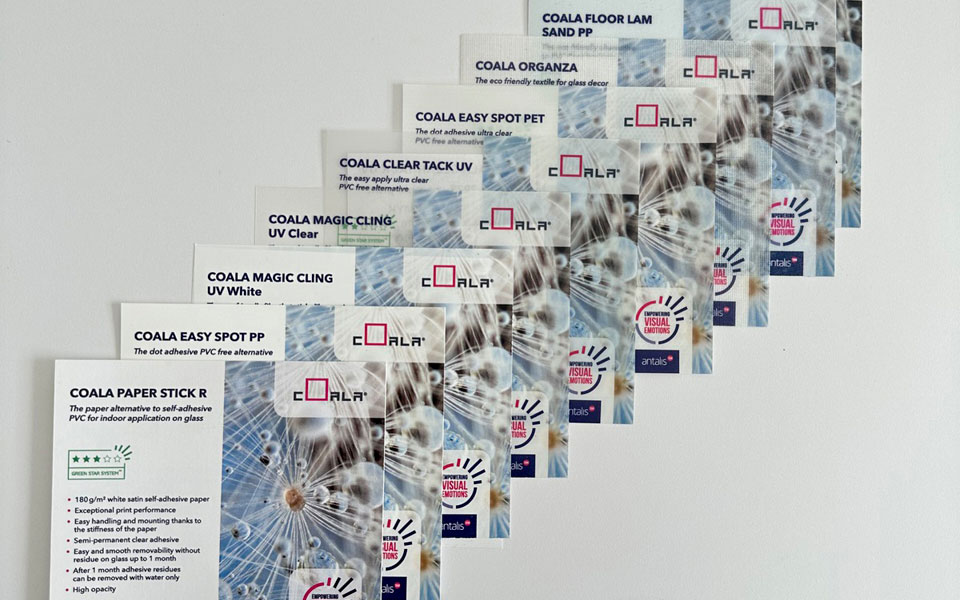
Self-adhesive applications
Communication displays use a lot of self-adhesive materials. Most of them are made of PVC and thrown away after just a few promotions. However, credible alternatives are rising with a reduced carbon footprint. Test our range of PVC-free self-adhesive materials.
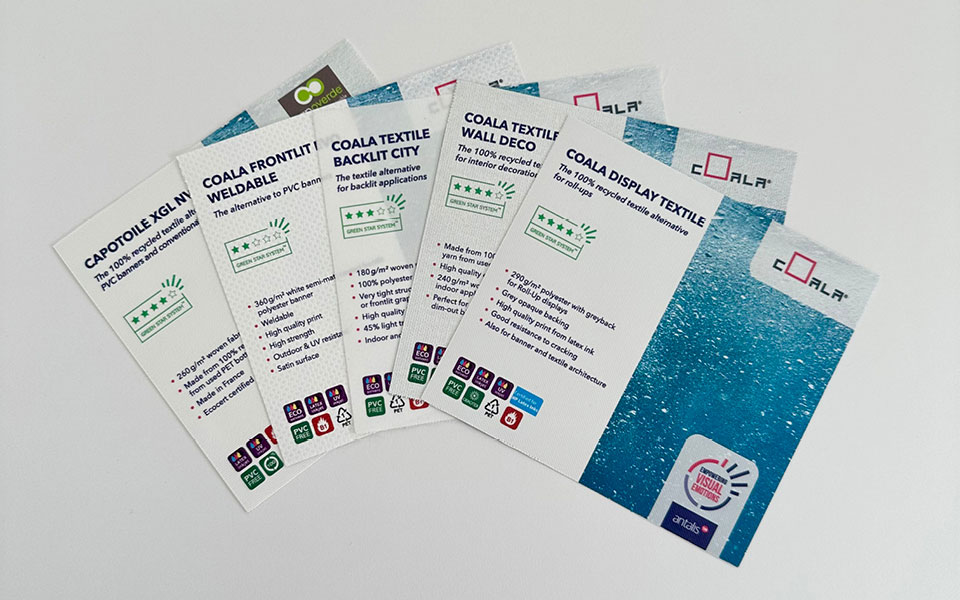
Large-format banners
Among visual communication products, large-format banners are prominent, especially for large-area outdoor advertising or suspended indoor signage. After decades of PVC and composite materials, we now have many options to switch to PVC-free banners and textiles.
Conclusion: let’s be the solution together
Choosing sustainable materials has shifted from being an option to second nature for more and more businesses today. And that's not surprising when we see how imperative it is to include sustainability in the supply chain. Stakeholders expect companies to adopt these eco-responsible practices.
Initiatives like the SwitchGreen Box provide tangible solutions to make sustainable practices the easy and obvious choice in many industries. By embracing sustainability, we can drive meaningful change and build a better future for all.







